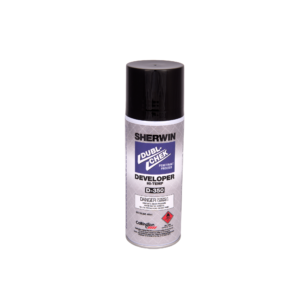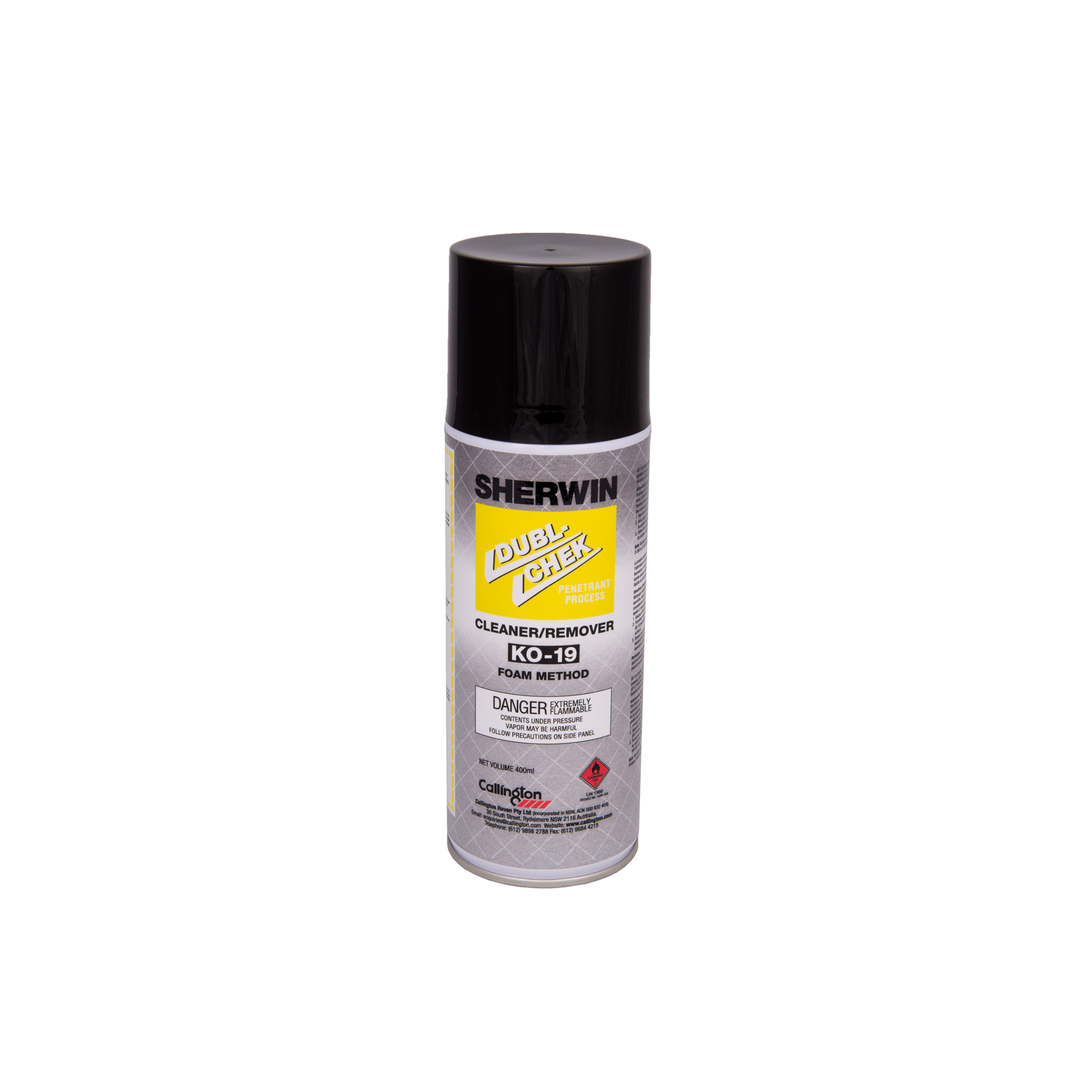HI-TEMP D-350 is a high temperature developer used to enhance penetrant indications on parts at elevated temperatures. D-350 is the developer step in a three-part high temperature system. HI-TEMP KO-17 penetrant and HI-TEMP KO-19 remover is used in this HI-TEMP penetrant system. HI-TEMP D-350 complies with low sulfur and low halogen requirements.
No information
1. Application: Apply HI-TEMP KO-17 penetrant by spray or brush to a limited area. The area to which the penetrant is to be applied should not be too large, so processing can be completed within penetrant and developer dwell time restraints. The size of the area will vary with inspection temperatures, part geometry, and operator experience.
2. Dwell Time: The penetrant must be allowed to dwell on the part surface to promote the penetrant time to enter any surface flaws. At higher temperatures, penetration occurs more quickly.
07.2ºC – 176.7ºC;30sec – 1min
79.4ºC – 107.2ºC;1min – 2min
51.7ºC- 79.4ºC;2min – 3min
23.9ºC – 51.7ºC;3min – 10min
10ºC – 23.9ºC;10min – 30min
Allowances must be made for contamination levels and flaw sizes.
3. Removal: Wipe the surface with paper or soft clean cloth towels to remove as much KO-17 as possible from the part surface. Spray KO-19 remover directly onto the surface of the part in a thin coat and immediately wipe from the part surface. The part is then wiped with a water saturated towel or cloth to remove the last traces of penetrant. Finally, a dry wipe is used to remove any water from the part.
4. Drying: Use paper or cloth towelling to dry the part surface thoroughly. Extra drying time before applying developer to heated parts should not be required.
5. Developing: D-350 developer should be sprayed on the part surface from a distance of 150mm immediately after the excess penetrant has been removed and the part has dried. Apply a thin even coat, two or three thin coats are preferred to a single, heavy coat. Make sure the developer has been agitated to ensure suspension of powder.
6. Inspection: Observe the surface for defect indication formation while the developer is applied. Surface examination should begin within a minute or two after developer application. Final surface examination should be completed as quickly as practical, and within ten or fifteen minutes.
• SAE AMS 2644
• QPL MIL-I-25135
• ASME Code NDT, Sec V
Colour: White Suspended Particles
Flash Point: 11.7ºC
Boiling Point: 82.0ºC
Specific Gravity: 0.79
| Code | Packaging |
|---|---|
| 1501/400 | Aerosol |












